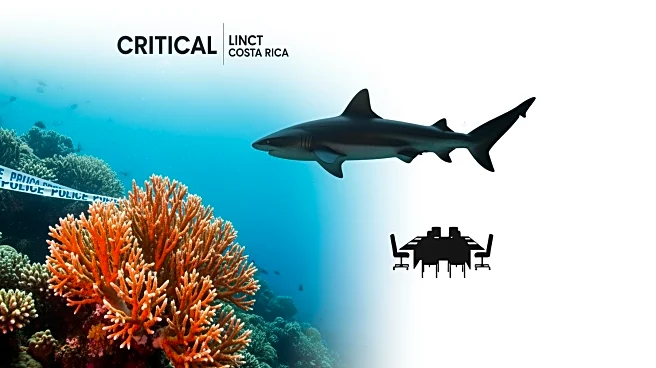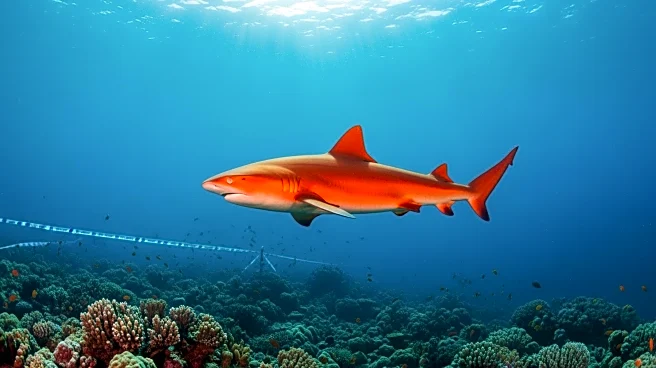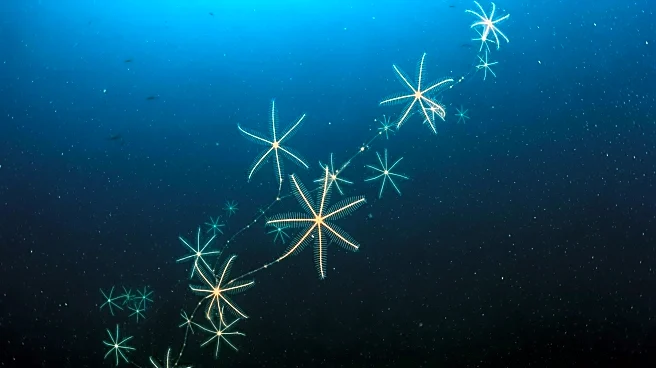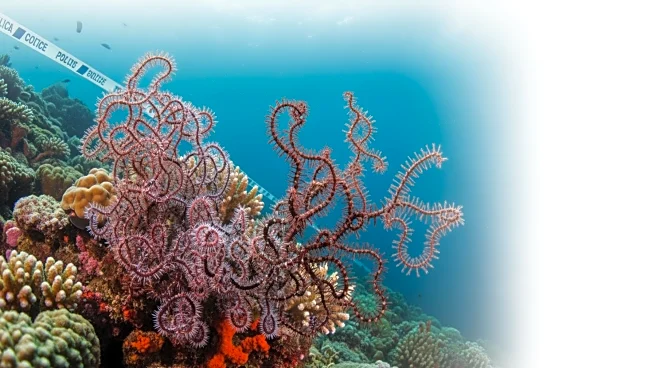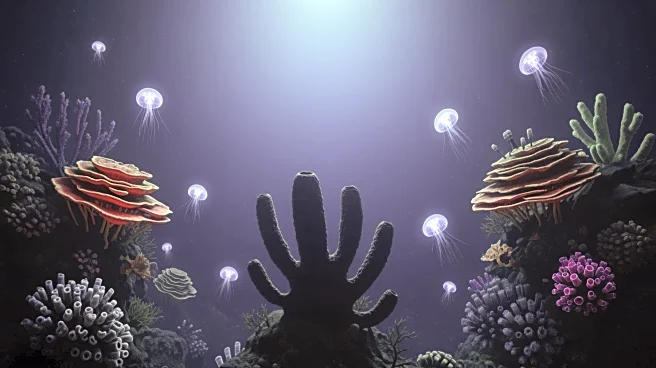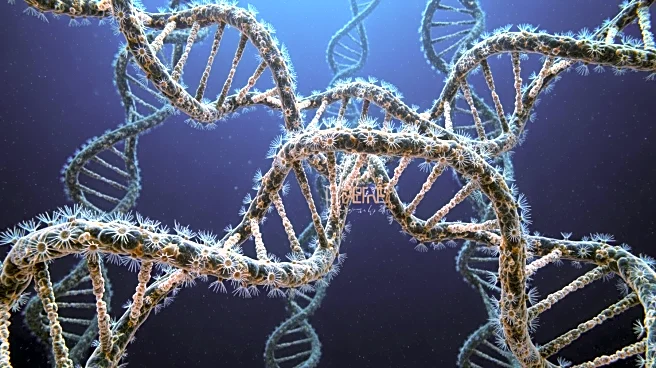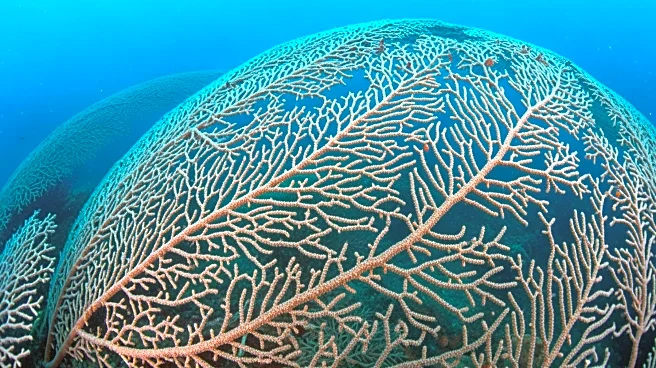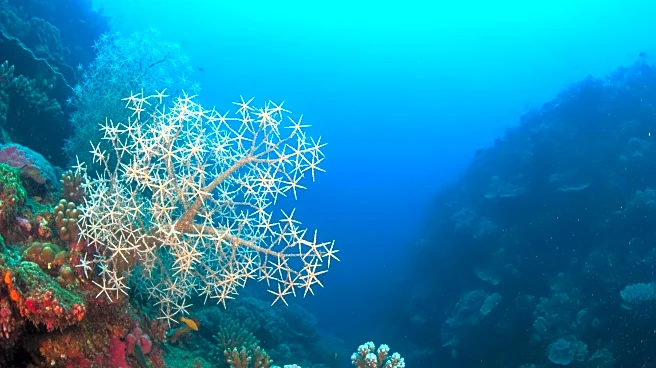What's Happening?
A rare bright orange nurse shark was spotted near Tortuguero National Park in Costa Rica, marking a significant discovery in marine biology. The shark, caught by Garvin Watson, exhibited two rare genetic
conditions: albinism and xanthism. This unique pigmentation, characterized by a striking orange color and white eyes, is the first documented case of xanthism in a nurse shark and possibly the first instance in the Caribbean. The shark was photographed and released, sparking interest among scientists who are studying the genetic implications of these conditions. Researchers believe this finding could lead to broader questions about the genetic diversity of local nurse shark populations.
Why It's Important?
The discovery of the orange nurse shark is significant for marine biology, as it highlights the genetic diversity within shark populations. The presence of xanthism, a rare condition affecting pigmentation, could provide insights into genetic mutations and their impact on marine life. This finding may influence future research on genetic diversity and conservation strategies for sharks, particularly in the Caribbean region. The unique coloration could also affect the shark's vulnerability to predators, raising questions about survival and adaptation in marine ecosystems.
What's Next?
Further research is needed to explore potential genetic or environmental factors influencing this rare pigmentation anomaly in sharks. Scientists may conduct studies to understand the genetic basis of xanthism and its occurrence in other marine species. This could lead to new conservation strategies aimed at preserving genetic diversity in shark populations. Additionally, the discovery may prompt increased interest in marine research and conservation efforts in the Caribbean, potentially attracting more scientists to study the region's unique marine biodiversity.
Beyond the Headlines
The discovery of the orange nurse shark could have broader implications for understanding genetic mutations in marine life. It raises ethical questions about human intervention in natural ecosystems and the importance of preserving genetic diversity. The unique pigmentation may also influence cultural perceptions of sharks, potentially increasing public interest in marine conservation. Long-term, this finding could contribute to shifts in conservation policies and practices, emphasizing the need to protect diverse genetic traits in marine species.
